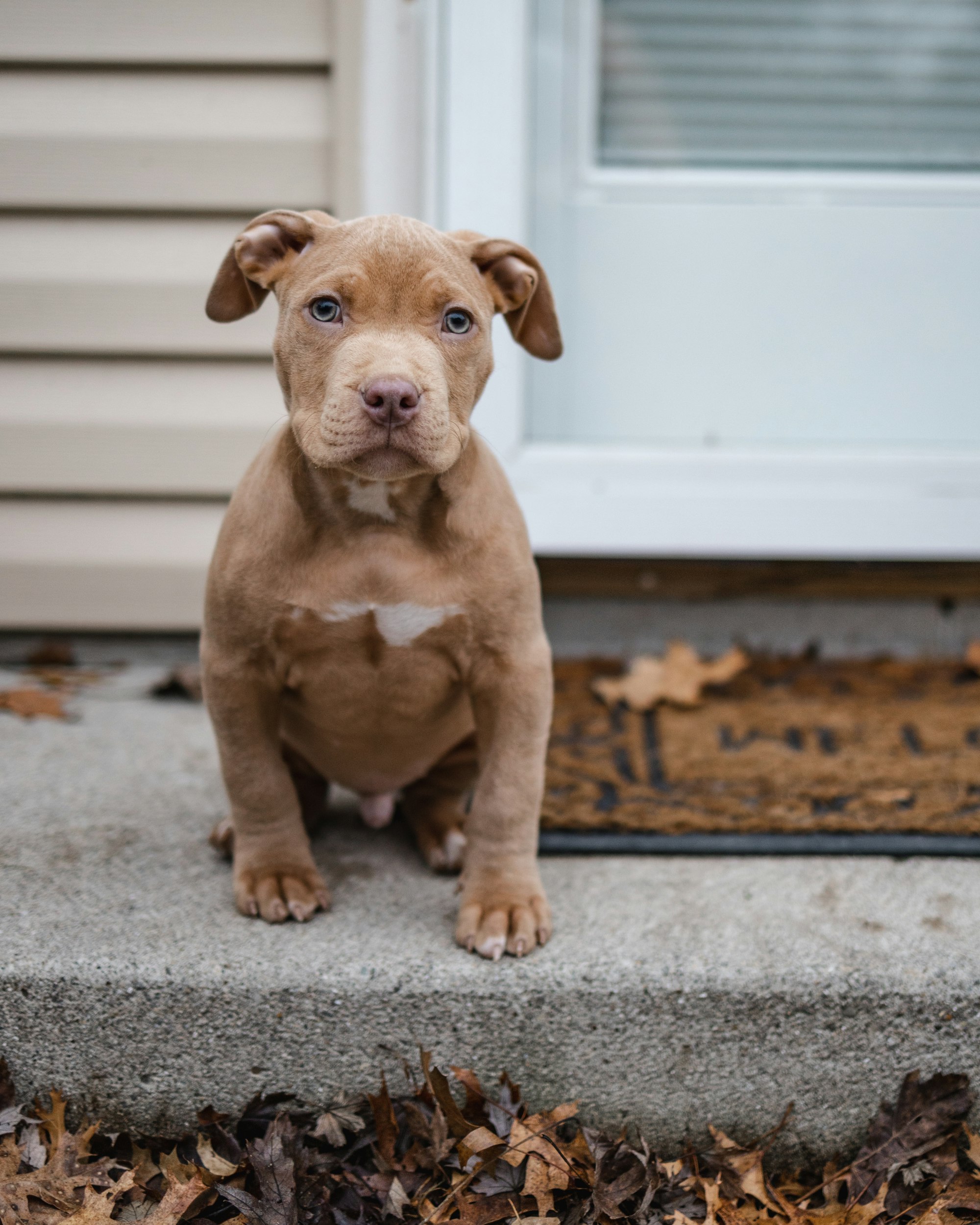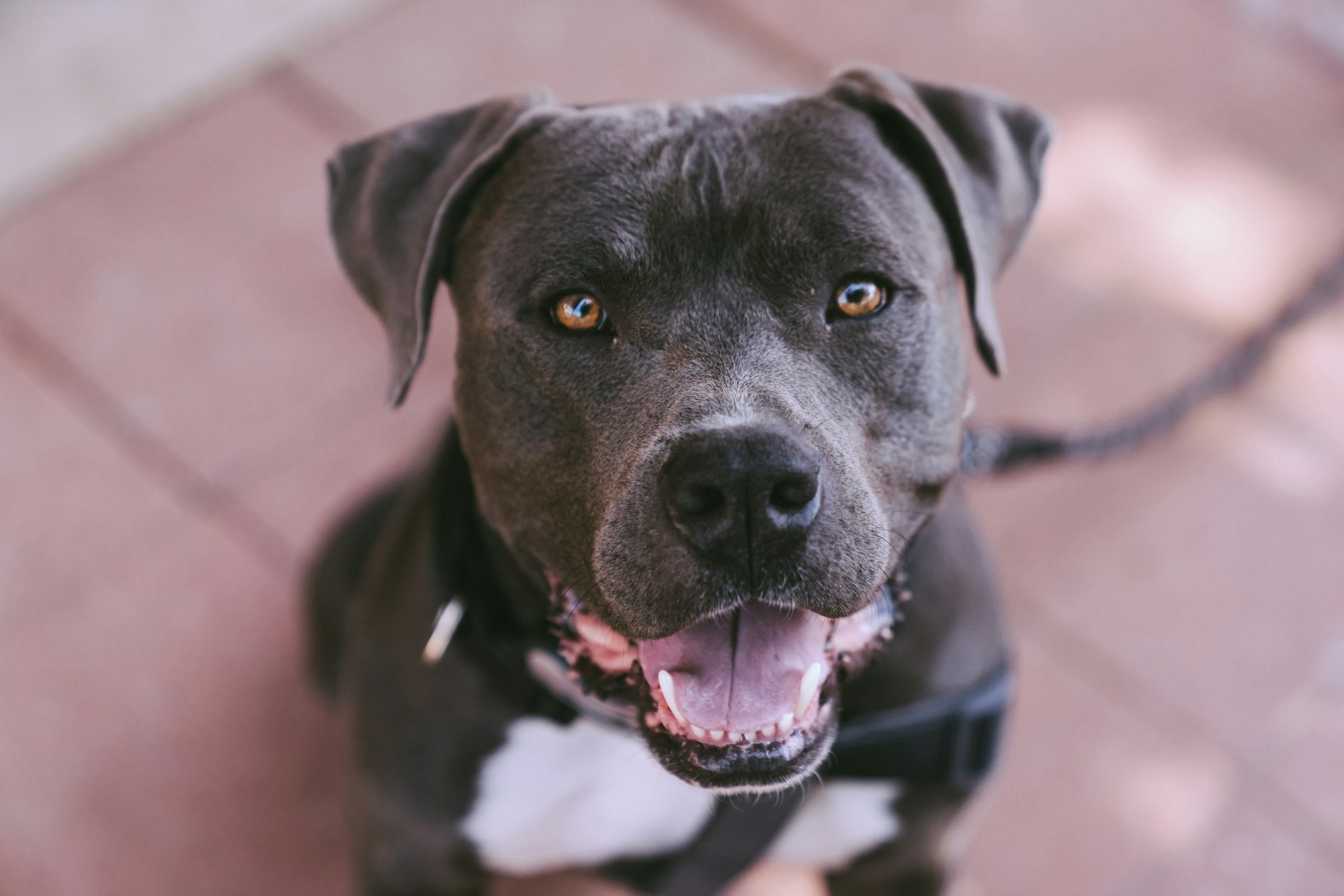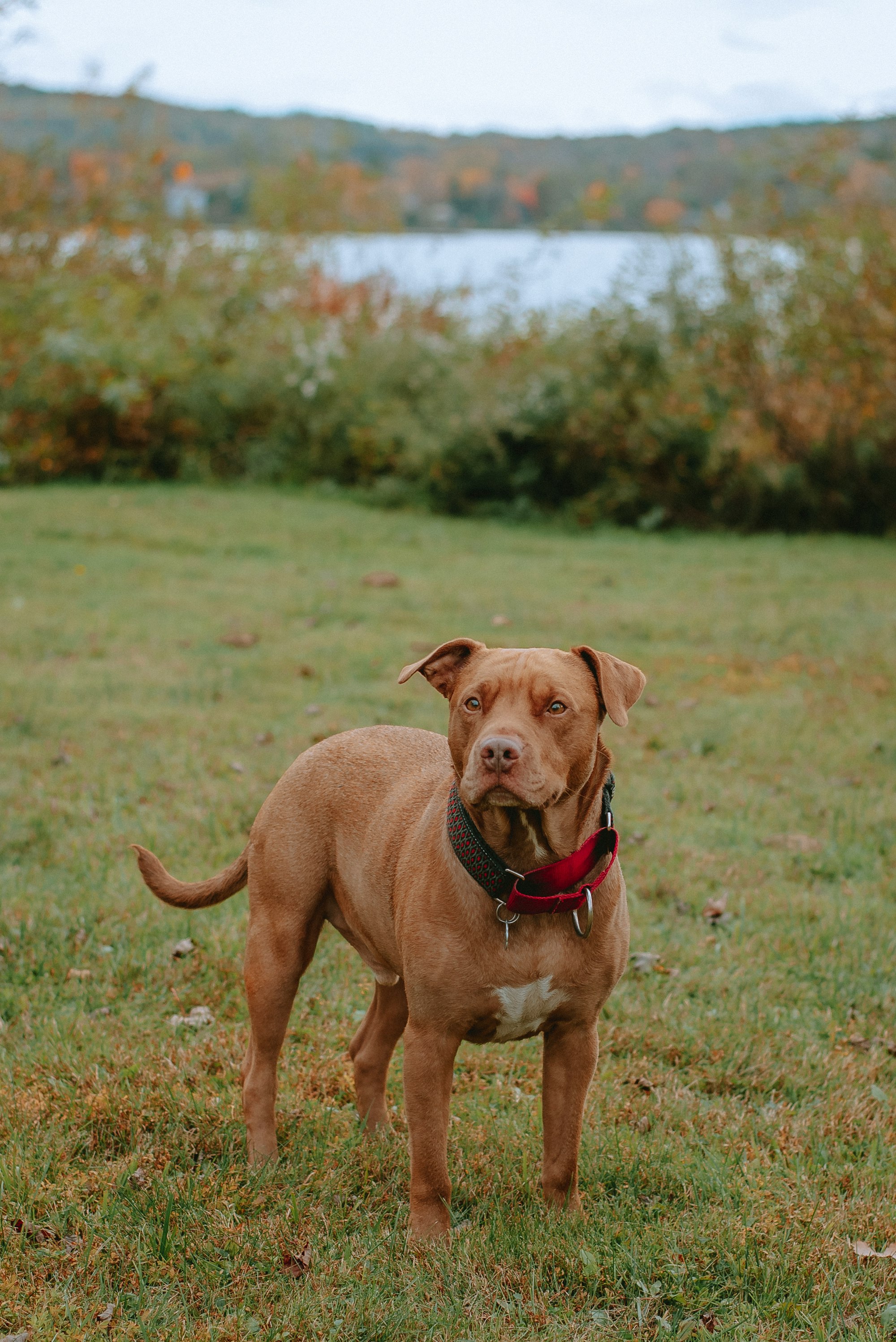Mastering Pitbull training requires time, patience, and a deep understanding of these often misunderstood creatures. If done right, it results in a well-behaved companion, full of love and joy.
Understanding Pitbull Temperament
Contrary to popular belief, Pitbulls are not naturally aggressive. They're intelligent, strong-willed, and eager to please. These traits, however, require an owner who can channel them appropriately.
Positive Reinforcement: The Key to Successful Pitbull Training
To start your journey of Pitbull training, it's essential to understand the concept of positive reinforcement. Rewarding your dog for good behavior reinforces the action, making them more likely to repeat it.
Consider a scenario where your Pitbull waits patiently at the door when someone arrives. If you reward this behavior, the chances are high your dog will repeat it.

The Challenge of Separation Anxiety
While training, you may notice your Pitbull showing signs of separation anxiety. This is common in many dogs, not just Pitbulls. Training can alleviate this stress. Provide your Pitbull with comforting items and a safe space, gradually increasing their alone time.
Pitbull Training: Commands and Consistency
Consistency is the key. "Sit," "Stay," "Come," and "Leave it" are essential commands every Pitbull should know. Start with one command at a time, using treats as a reward system.
Addressing Common Pitbull Behavior Issues
Pitbulls can be stubborn. While this might seem like a hurdle, with the right techniques, it can be controlled.
For example, dealing with a heavy dog can be physically demanding. Start with leash training early on. Use a sturdy, comfortable leash, and reward your dog for walking nicely beside you.
Training a Senior Dog
Age doesn't restrict training. When it comes to a senior dog, training can enhance their quality of life. Remember, patience is vital. Positive reinforcement works wonders even with older dogs.
Housebreaking Your Pitbull
Pitbull puppies are full of energy, making them prone to mischief. Start housebreaking early on, taking them out after meals and naps. Clean up accidents promptly, to avoid encouraging a repeated behavior.
Making Your Dog Enjoy Car Rides
For many dogs, car rides can be stressful. To make your dog enjoy car rides, start by letting them explore the stationary car. Gradually increase the length of car rides, always ensuring your dog's safety and comfort.
Dealing With Grief in Dogs
Believe it or not, dogs do grieve. They form deep bonds with their owners and other pets, so a loss can deeply affect them. Provide extra attention and comfort during such times.
The Risk of Foxtails
While training your Pitbull outdoors, beware of foxtails. These seemingly harmless plants can cause serious issues if ingested or if they get lodged in your dog's skin.
Pitbull Socialization Techniques: Setting the Foundation
It's important to remember that mastering Pitbull training also involves effective socialization. The right socialization techniques can shape your Pitbull into a sociable, well-mannered pet, comfortable around other dogs and people.
Take your Pitbull to dog-friendly parks and spaces, expose them to new sounds, sights, and smells. Positive experiences with other dogs, children, and adults during their formative months can reduce their chances of developing fear or aggression.
Pitbull Obedience Training: The Next Step
Once your Pitbull is familiar with basic commands and has been socialized, you can move onto obedience training. This kind of training goes beyond basic commands and encourages good behavior in various settings.
An important aspect of obedience training is teaching your Pitbull to walk nicely on a leash. Pitbulls are strong dogs, and without proper leash manners, they can easily overpower their handler. With consistency and rewards, your Pitbull will learn to walk calmly by your side.
Aggression Control in Pitbulls: Breaking the Stereotype
Despite the stereotypes, aggression is not a trait inherent to Pitbulls. However, like any breed, if not properly trained and socialized, a Pitbull may develop aggressive tendencies.
If your Pitbull shows signs of aggression, don’t panic. Reinforce basic obedience training, provide plenty of exercise, and consider consulting with a professional dog trainer or behaviorist. With the right approach, aggressive behavior can be managed and reduced.
Crate Training a Pitbull: Providing a Safe Space
Crate training can be a helpful tool in your Pitbull training journey. It provides your Pitbull with a safe, comfortable space of their own. It also makes housebreaking simpler, as dogs naturally avoid soiling their resting areas.
Remember to make crate training a positive experience. Never use the crate as a punishment. Instead, make it inviting with soft bedding and toys.
Balancing the Stubbornness
Pitbulls are known for their tenacity, which can sometimes translate into stubborn behavior. This doesn't mean they're untrainable; it simply means they need clear, consistent rules to follow. Regular training sessions, plenty of positive reinforcement, and a little bit of patience go a long way.

Pitbull Training Do's and Don'ts
In your journey of mastering Pitbull training, it's beneficial to understand some do's and don'ts.
Do:
- Use positive reinforcement: Rewarding good behavior is more effective than punishing bad behavior. Treats, toys, or praise can all serve as rewards.
- Start early: The earlier you start training and socializing your Pitbull, the better. They are quick learners, and habits learned early tend to stick.
- Be consistent: Use the same commands and rewards to avoid confusing your Pitbull. Make sure everyone in the household follows these rules.
Don't:
- Use physical punishment: Pitbulls respond poorly to aggressive behavior. It's ineffective and can lead to trust issues or aggression.
- Encourage rough play: Although it might seem fun, encouraging aggressive play can lead to unwanted behavior, especially in public places or around other dogs.
- Ignore bad behavior: Ignoring unwanted behavior won't make it go away. Address it immediately with a firm "No" or by redirecting your Pitbull's attention to something positive.

Professional Tips for Pitbull Owners
Remember, every dog is unique, and what works for one might not work for another. Therefore, getting advice from professional trainers can be immensely beneficial in mastering Pitbull training.
Professional trainers can provide personalized training plans that consider your Pitbull’s temperament, age, and individual quirks. This expert guidance can be the difference between a stressful training experience and a rewarding one.
Understanding the Importance of Mental Stimulation
Pitbulls are intelligent dogs that thrive on mental stimulation. Incorporate puzzle toys, interactive games, and learning new tricks into your training routine. This not only provides mental stimulation but also reinforces training lessons and strengthens your bond with your Pitbull.
Handling Your Pitbull’s Health Alongside Training
While focusing on training your Pitbull to become a well-behaved companion, it's also important to ensure their health is taken care of. Regular vet check-ups, a balanced diet, and plenty of exercise will keep your Pitbull in top shape to absorb and respond to the training effectively.
Monitoring Their Diet
Pitbulls are athletic dogs that require a balanced diet to stay healthy and energetic. Consult with your vet about the best diet for your Pitbull, taking into account their age, size, and activity level. A healthy Pitbull is more likely to respond positively to training.
Regular Exercise: The Key to a Balanced Pitbull
Pitbulls are a highly energetic breed. Regular exercise helps them burn off energy, making them more focused during training sessions. Whether it's a game of fetch, a long walk, or a run in the park, keeping your Pitbull active is beneficial for both their physical health and training progress.
Regular Vet Check-Ups
Routine vet check-ups are essential for keeping track of your Pitbull's health. A healthy Pitbull is a happy Pitbull, and a happy Pitbull is easier to train.
The Significance of Patience and Understanding
When training your Pitbull, always remember that every dog learns at its own pace. What might work for one Pitbull may not necessarily work for another. If a certain training technique doesn’t seem to be working, it's okay to try a different approach. The key is to remain patient and understanding.
FI Dog Collars: A Training Tool and Beyond
When it comes to mastering Pitbull training, having the right tools at hand is crucial. One such tool that has revolutionized the way we interact with and train our dogs is the FI Dog Collar.
FI Collars and Basic Command Training
The FI Dog Collar offers GPS tracking and fitness monitoring features, making it an excellent tool for training your Pitbull. While teaching basic commands like "sit," "stay," and "come," you can let your Pitbull explore a bit further, knowing you have the safety net of accurate GPS tracking.
Tackling Separation Anxiety with FI Collars
Dealing with separation anxiety in your Pitbull can be a challenging aspect of training. The FI Dog Collar can offer you peace of mind. With its GPS tracking, you can always keep an eye on your Pitbull’s location when you're away, reducing their anxiety and yours.

The Role of FI Collars in Addressing Behavior Issues
FI Collars are beneficial in addressing common behavioral issues. They allow you to monitor your dog's activities, helping identify patterns that might lead to problem behaviors. For instance, if your Pitbull is getting restless and starts to become a heavy dog, pulling on their leash or digging up the yard, it might be due to insufficient exercise. The fitness tracking on FI Collars can help ensure they're getting the right amount of physical activity.
How FI Collars Can Help Senior Dogs
Training a senior dog comes with unique challenges. The FI Dog Collar's activity tracking can provide valuable insights into your senior Pitbull’s health and energy levels, allowing you to tailor your training methods accordingly.
Ensuring Safe Car Rides with FI Collars
When teaching your Pitbull to enjoy car rides, the FI Collar's GPS feature can provide an added sense of security. If a door is left open or your dog manages to slip out during a rest stop, you'll be able to locate them quickly.
Using FI Collars to Monitor Your Pitbull's Health
Physical health plays a vital role in the effectiveness of your Pitbull's training. The FI Collar’s fitness monitoring feature allows you to ensure your Pitbull is getting the right amount of exercise, helping them stay in optimal health for effective training.
Conclusion
Mastering Pitbull training is an enriching journey marked by patience, consistency, love, and the right tools. Starting early, using positive reinforcement, addressing behavioral issues, understanding health requirements, and ensuring regular exercise can mold your Pitbull into a well-behaved companion.
Tools like the FI Dog Collar play a significant role in monitoring health, handling separation anxiety, ensuring safety during car rides, and tracking your pet's whereabouts.
Ultimately, each step in this journey, whether handling a heavy dog or dealing with grief, brings you closer to a fulfilling life with your loyal, loving Pitbull. The training process might be challenging, but the results are profoundly rewarding.
FAQs
What is the best way to start training my Pitbull?
Start training your Pitbull as early as possible with basic commands such as "sit," "stay," and "come". Consistent, positive reinforcement methods work best for this breed.
How can I help my Pitbull with separation anxiety?
Try providing a comforting space for your Pitbull, maintain a calm departure and arrival routine, and consider using tools like the FI Dog Collar to monitor your pet's activity and location.
Can an older Pitbull still be trained?
Absolutely! Though training might be slower compared to puppies, senior dogs can still learn new commands and behaviors. Adapt your training techniques to match their pace and physical abilities.
My Pitbull is quite stubborn, is this normal?
Pitbulls are known for their tenacity, which can sometimes come across as stubbornness. Consistency, patience, and positive reinforcement can help overcome this trait.
How can the FI Dog Collar assist in training my Pitbull?
The FI Dog Collar offers GPS tracking and fitness monitoring features, which can be valuable tools in training. It allows you to monitor your Pitbull's health, exercise levels, and location, making training more effective and safe.
How can I make my Pitbull enjoy car rides?
Start with short trips and reward your Pitbull for calm behavior during the ride. Safety tools like the FI Dog Collar can provide an extra layer of security during car travels.
What should I do if my Pitbull shows signs of aggression?
Address signs of aggression immediately. Reinforce basic obedience training, provide ample exercise, and consult with a professional trainer if needed. Remember, aggression is not breed-specific and can be managed with proper training and care.
How often should I exercise my Pitbull?
Pitbulls are an energetic breed that requires regular exercise. Aim for at least an hour of physical activity every day to keep them healthy and responsive to training.
Why is socialization important in Pitbull training?
Socialization exposes your Pitbull to different environments, people, and animals, which helps reduce fear or aggression and encourages them to become well-rounded, well-behaved pets.
What kind of diet should my Pitbull have during training?
A balanced diet is crucial for a healthy, trainable Pitbull. Consult with your vet to determine the best diet plan for your dog, considering factors like age, size, and activity levels.




